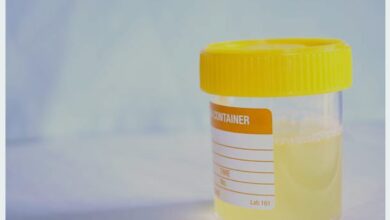“DOC, HAVE YOU GOT A MINUTE?”

The phrases, “Doc, have you got a minute?” or “Doc, do you know anything about____?” were questions I used to hear all the time. To me, they immediately signaled I was going to be told about a medical problem or be asked my opinion of something about which I was expected to be an expert. These, and many other expressions, were used by patients or friends as a means to slide quietly into my consciousness. They were the way many patients who had a worrisome symptom, or took a certain medication, or were curious about a medically-related subject would get my attention. It worked!
Most people were considerate and asked questions at an appropriate time, like during an office visit or other consultation. Of course that was the perfect time. However, other folks were totally unaware they were asking questions at an inappropriate time or place and were interrupting my personal life. It didn’t occur often, but when it did, I sometimes found it annoying. The most glaring example was the patient I ran into during dinner at a Steak N Shake restaurant who said he had a sore throat and asked me to “take a look” at it! I picked up his table knife, got out my penlight, and examined his throat right there in his booth. The most common place for impromptu questions and examinations was the foyer of my church before AND after church services. It was a rare Sunday when I wasn’t asked something by somebody. Of course when nearly half of the congregation were my patients, it was not unusual to discuss things off the cuff.
One thing for sure is when a doctor, out of courtesy, asks a person ,”How are you?” you will definitely receive an answer and a few follow-up questions. Family medicine is a specialty that lends itself to people seeking you out for information. The Family Doctor is the most broadly knowledgeable physician and knows something about a wide variety of medical topics. As such, visits to Family doctors are frequent, and rapport is established. Also, as soon as someone learned I was a doctor, you could see the wheels turning in their head conjuring up numerous questions. I’ve often wondered how patients would react if they learned I was a proctologist or a radiologist. What kind of questions would they ask, then? They would probably snicker at the proctologist and wonder what the heck was a radiologist.
During my years of practice I answered dozens of questions every day. Living in the same area where I practiced, I ran into patients everywhere I went, and most of the time it didn’t bother me. Interaction with patients solidified their trust and gave them a sense of my availability. I’d have to also say I felt a sense of pride and accomplishment, as well. I was meshing my personal and professional selves into one person who tried to help others unselfishly. That’s not to say I didn’t savor my free time because I certainly did. But still I was only slightly less likely to see a patient on the golf course as I was in the grocery.
Now, I don’t live where I practiced. I don’t see patients everywhere I go. Now, I don’t get summoned by “Doc, have you got a minute?” and in some ways I miss it. The people I see now don’t have the bond of me being their doctor for 10, 15, 25, or 35 years and are more cautious and skeptical. Thus, I miss the feeling of being needed; the feeling that my opinion is important; the emotional boost I receive from people who say I’m relevant in their lives. I know it’s probably a ego thing, but if wanting to be trusted and respected is egotism, I’m guilty.
I hope you have a good relationship with your family doctor, internist, pediatrician, or gynecologist. I hope you are comfortable asking questions and not intimidated by the doctor’s shield of indifference. The doctor doesn’t have to be your friend, but a little of that kind of feeling definitely improves communication. The doctor helps the relationship, too, by being selfless, genial, and interested. Ignoring or avoiding a patient in public doesn’t help rapport one bit. Just a simple “hello” may be enough.
So, “Doc, have you got a minute?” should be met with “Yes, I do. Why do you ask?” This brief interaction with a patient will have more meaning to them than we can ever understand. It shows the doctor recognizes you, is interested and really cares, even if the advice is just to call the office for an appointment. More good is done than by this gesture than one can ever imagine.





Dr. Gilkison you have always been interested and caring to me as a patient! So glad Tom want to high school with you! Just had a first time visit with an oncologist here in Cape Coral,Florida! His name is Dr. Syed Zafar and he took his time with me and my CLL diagnosis! I felt as if he did care! Reminded me of you! Take care, Carol Tiedemann
Carol, Thank you for your very kind words. I was blessed to have a host of really nice patients, and you were in that group. Thanks again.